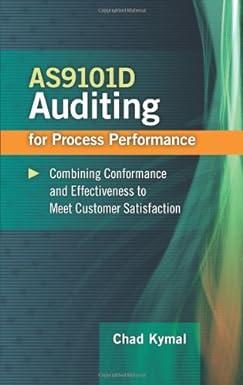Question
Two-period Ramsey optimal taxation. Consider a two-period economy in which the government must collect taxes in order to finance government purchases g1 and g2. Suppose
Two-period Ramsey optimal taxation. Consider a two-period economy in which the government must collect taxes in order to finance government purchases g1 and g2. Suppose that the government cannot levy lump-sum taxes; instead, all taxes are in the form of proportional consumption taxes. When taxes are proportional, one general lesson weve seen is that the timing of taxes does matter for consumption, savings, and welfare.
What it means that the timing of taxes matters is that consumption decisions of the economy are affected by the tax rates that the government levies. In order to raise the revenue needed to pay for g1 and g2, the government does have to levy some taxes: an interesting question is what is the optimal tax rates for the government to st. Here we mean optimal in the sense that the government ultimately cares about the representa- tive consumers lifetime utility, which is known as a Ramsey government problem.
The Ramsey government problem essentially tires to answer the following question: What tax rates should the government set?
Assume the following:
The real interest rate between period 1 and period 3 is zero (r1 = 0)
The representative agent has no control over his real income y1 or y2
The consumption tax rates in the two periods are denoted tc1 and tc2
The representative consumer starts with zero initial assets (a0 = 0); thus the LBC oftheconsumeris(1+tc1)c1+(1+tc2)c2 =y1+y2
The government starts with zero initial assets (b0 = 0); thus the LBC of the govern- ment is g1 + g2 = tc1c1 + tc2c2
The lifetime utility function of the consumer is u(c1, c2) = ln c1 + ln c2 There are three steps to computing the Ramsey-optimal tax rates.
(a) The first step is to determine the consumers optimal choices of c1 and c2 as functions of y1, y2, tc1, tc2. In setting up the appropriate Lagrangian, solve for the optimal choices of consumption in period 1 and consumption in period 2 as a function of these four objects.
(b) Next, for a moment, suppose that the government did have the ability to levy lump- sum taxes. If it could levy-lump-sum taxes, then the governments LBC would be g1 +g2 = T1 +T2 and the consumers LBC would be c1 +T1 +c2 +T2 = y1 +y2, where T1 and T2 denote lump-sum taxes in periods 1 and 2.
In the case of lump-sum taxes, what would be the consumers optimal choices of consumption in period 1 and 2? (Set up a Lagrangian here if you need, but if you are able to logically determine the optimal quantities of consumption here you may do so.)
(c) Compare your solutions for optimal period-1 consumption and optimal period-2 con- sumption in parts (a) and (b) above. Solve for the tax rates tc1 and tc2 that equate
these two different sets of choices. These tax rates you find, what ar the optimal tax rates, should be functions of y1, y2, g1, andg2 and no other variables. How do the two tax rates compare?
Step by Step Solution
There are 3 Steps involved in it
Step: 1

Get Instant Access to Expert-Tailored Solutions
See step-by-step solutions with expert insights and AI powered tools for academic success
Step: 2

Step: 3

Ace Your Homework with AI
Get the answers you need in no time with our AI-driven, step-by-step assistance
Get Started


